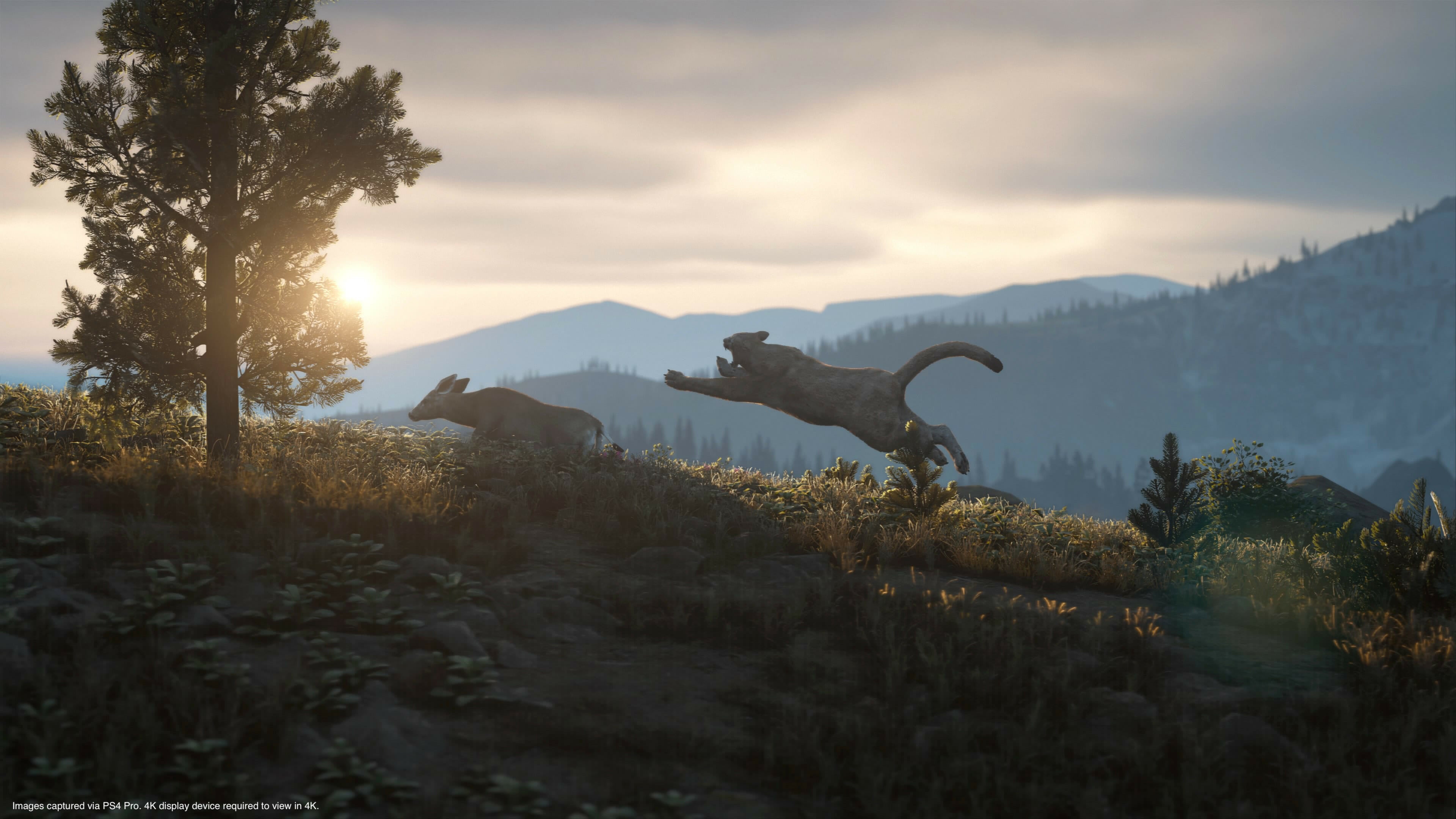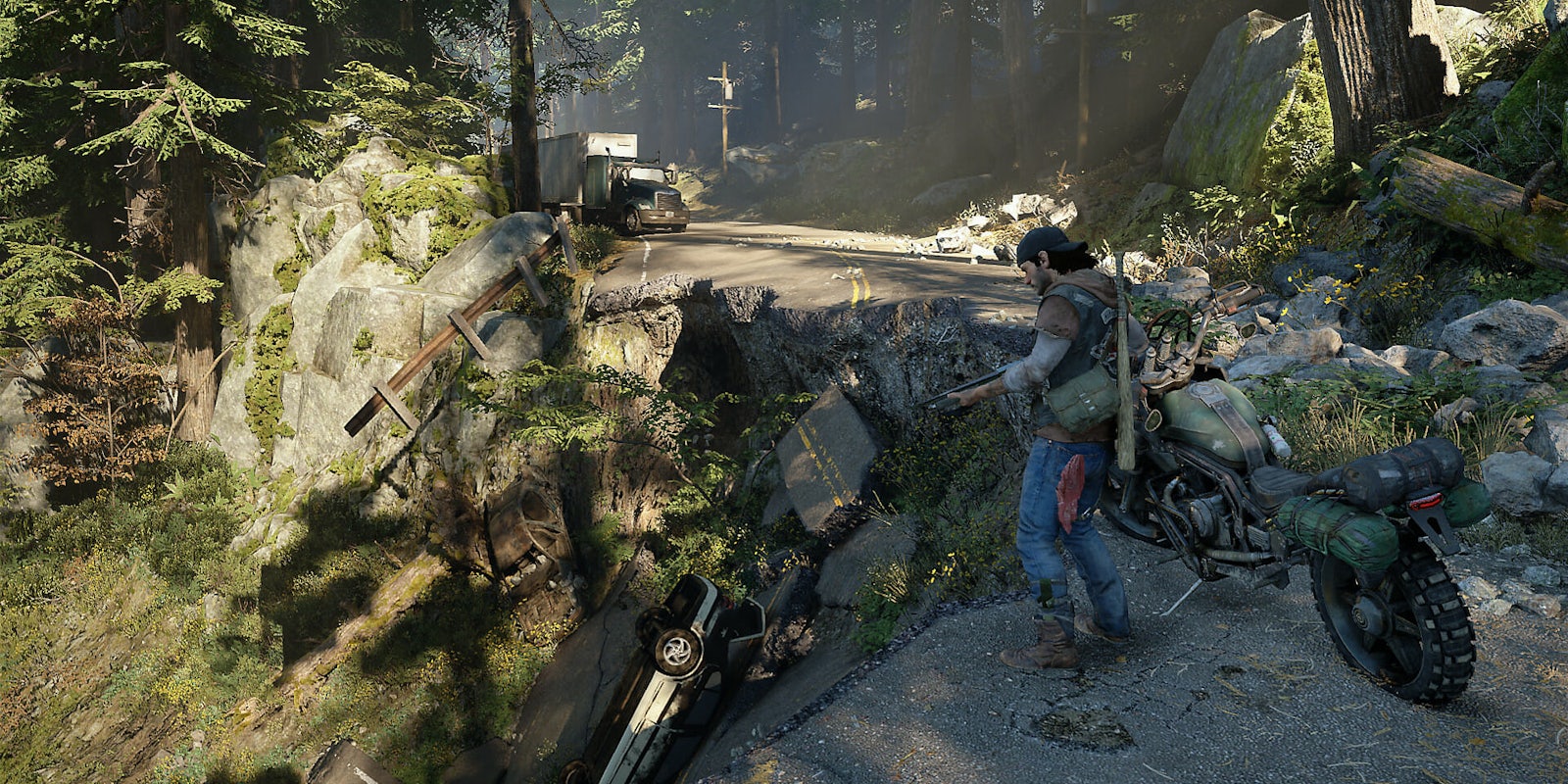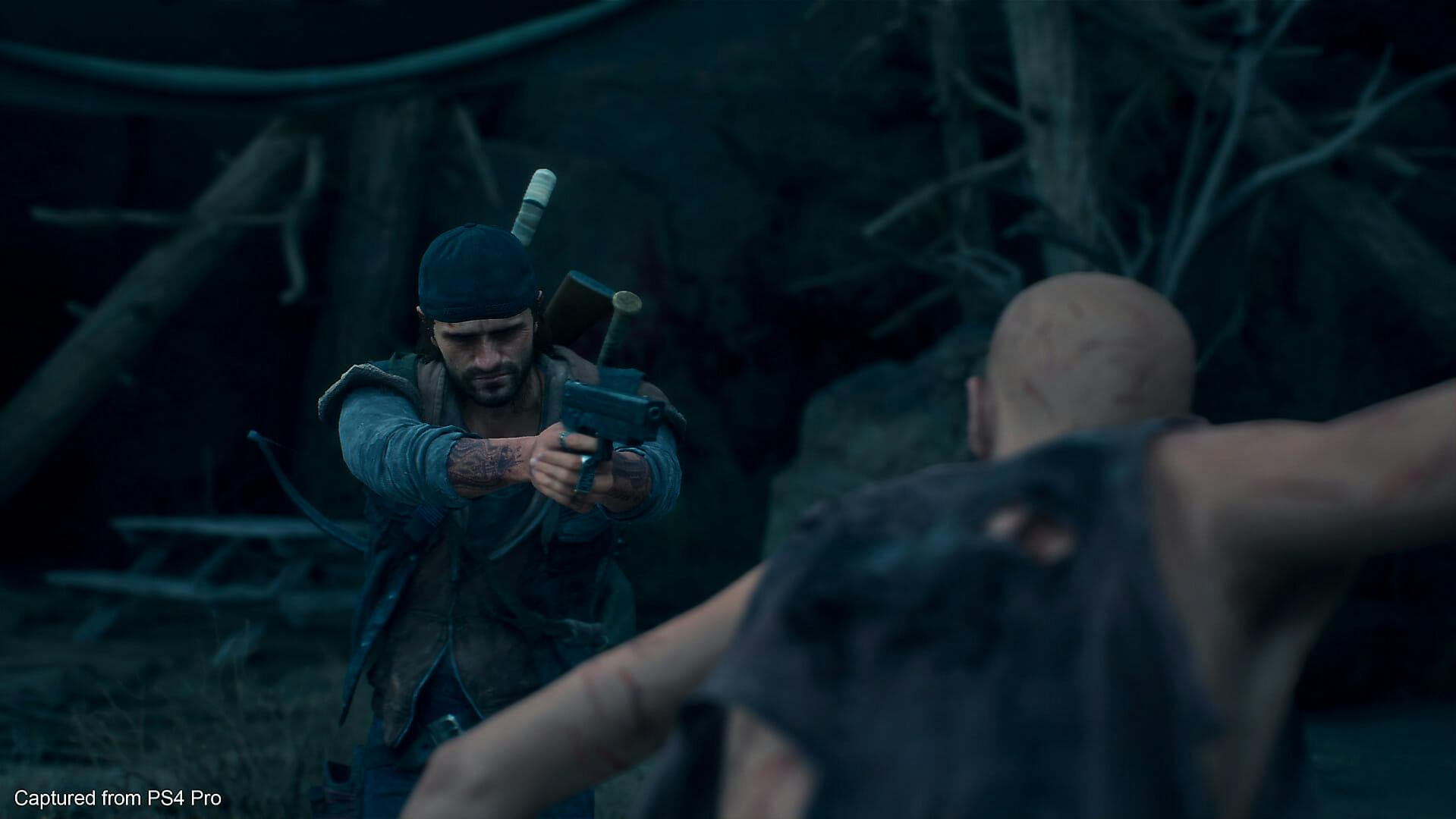There’s no shortage of stories about the end of the world. Mainstream pop culture has been inundated with grim dystopias, zombie outbreaks, and impending collapse for a better part of the 21st century. In a way, these scenarios serve to give their audience a little solace: They say that while the modern world can seem bad, things could always be worse. Counting all the media that might fall under the “post-apocalyptic” umbrella would be nearly impossible. But despite all these entries, good fiction has the opportunity to stand out with a unique take (think Mad Max: Fury Road or Horizon Zero Dawn) on building a world gone wrong.
Days Gone fails on almost every level to spin a distinct, compelling take on such well-trodden ground. This uninspired zombie game feels like a collection of the best elements from other PlayStation 4 titles scattered around a dull, drab open world.
Sony Bend Studio clearly wanted their own take on The Last of Us, but Days Gone’s overly serious tone is mismatched with the machismo of its moment-to-moment gameplay. The opening cutscene sets up a tragic backstory that’s quickly lost to obnoxious characters and an unmemorable aesthetic. Deacon St. John—voice and motion capture by Sam Witwer—is about as bland as a protagonist can be. Though the motion capture performance is impressive, conveying every grunt and growl with strong authenticity, it’s hard to care at all about his journey.
That’s a problem, since the act of the journey is one of Days Gone’s biggest claims. Deacon, a tough biker facing the end of days, is running from his past; this calls for a great deal of travel. Motorcycle exploration aims to set this game apart from other open-world action titles. A lovingly recreated Pacific Northwest wilderness awaits players with picturesque foliage and true-to-life atmosphere. Oregon’s scenic backdrop is overwhelming, but it’s all background noise. Brutishly careening through the delicate landscape on a souped-up motorcycle, you travel back and forth (and back and forth and back) between waypoints on your quest to… well, quest.
Motivation is an afterthought in Days Gone, for player and protagonist. The grizzled ex-bounty hunter helps the denizens of the post-apocalypse (friend and foe alike) with tasks as he tours the wide open country. The latest in a series of “impressive” map games, Days Gone is chock-full of things to do. Why you’d want to do most of those things, though, the game doesn’t care to answer.
All the familiar trappings of an open-world game are present in some form. There are towers to climb. There are bases to clear. There are weapons to craft. There are strangers to help, strangers to hurt. There are skill trees to fill, checklists to complete, stories to hear, and new regions to traverse. If there’s anything distinct about Days Gone, it’s the notable lack of a discernible identity. Systems and mechanics are ripped whole-cloth from better games, forming a stunted patchwork of ideas pertaining to survival, zombies, and exploration.
But the sheer excess of optional activities available in Days Gone is undermined by repetitive routines. Driving around on the motorcycle should be more exciting than it is: Almost immediately, the story hampers Deacon’s vehicle and forces him to build it back up over the next dozens of hours.
From there, you’re tasked with visiting survivors and acting as a courier for supplies. Along the way, you encounter people and places from Deacon’s past (illuminated by long, poorly edited cutscenes). You’re meant to invest in these burgeoning communities, building trust and getting civilization back on track. But Days Gone works best when Deacon is in isolation, lost in the woods, roaming a sandbox of desolation and danger.
As you trace the map over rivers, hills, and abandoned highways, the world occasionally comes to life.
Roaming hordes pose a serious threat, and an in-game prompt will smartly tell you that running away is your most viable combat option. There are sections of the map that require you to move quietly, picking off foes from a distance or avoiding detection altogether. Likewise, you may just stumble into an organic encounter on your own. I was jumped by a pack of wolves looking for food, and I’d often pull over when I heard the sound of a car horn honking. Saving other survivors often nets you experience points and some helpful resources, but never seems to establish memorable characters or uncover new story beats. Almost every non-playable character in Days Gone stands idly by after handing off their rewards, staring into the void. In these stories, as well, one might expect the architecture and environment to reveal more about the apocalypse itself. But this world feels empty in a way that isn’t based on any disaster—just a lack of character.

Traversing the wilderness can be rewarding when you stumble upon wildlife or a new vantage point from which to survey the swath of swaying trees. But active settlements, government checkpoints, and other relics of the old world are devoid of the beating heart that typically makes exploration so exciting. Coupled with repetitive mission design, these environments all begin to bleed together, losing any impact the narrative tries to afford them.
As an action game, Days Gone blends stealth, third-person shooting, and close-up brawls. Scouring the world for scraps, you’re able to craft weapons, ammo, and items to boost Deacon’s stamina. Corpses can be looted for the same kind of rewards, making every kill important. Progression is doled out slowly through skill points and XP, as a way to encourage players to poke around every corner of the open world.
Loose things to pick up and piece together are scattered as far as the eye can see, but I still felt I was always behind on what I needed most. Though I almost always beat away Freakers with a baseball bat or lead pipe, when I needed to draw my shotgun, I only had a few shells. The same goes for health kits; I was rarely taking hits but could only collect one or two bandages when I was in danger. Resources are pooled together in one place and called on for a variety of reasons. My motorcycle constantly needed maintenance after a long trek, dipping into my reserves. That sort of diversion depleted the amount of material I had left to craft ammo and repair weapons, so suddenly I was running low on all supplies just after driving from one waypoint to another. Some games might try and spin this as a brutal, oppressive take on the post-apocalypse, but it just comes off as boring and unsatisfying.
Playing Days Gone should feel more invigorating. I was never won over by the story’s mediocre presentation enough to care about any of the (admittedly few) characters. I was intrigued by the mystery of the shadowy NERO corporation, but even exploring those abandoned outposts quickly became a chore. Facing down a horde of undead monsters felt clunky and overbearing thanks to layers of weapon menus and restrictive resources. In motion, the game feels like a flashy tech demo; capitalizing on the design of the DualShock controller for intuitive menu controls and responsive user interfacing. There is no denying that Days Gone is visually impressive, heightened by expressive motion capture and a lifelike wilderness. The signs of life that should make for a great experience are all there. But in every shining sunset, detailed human face, and open clearing, I couldn’t find any shred of soul.
2/5
Days Gone is available for PlayStation 4 on April 26. This review was written based on a copy of the game provided by the publisher.



